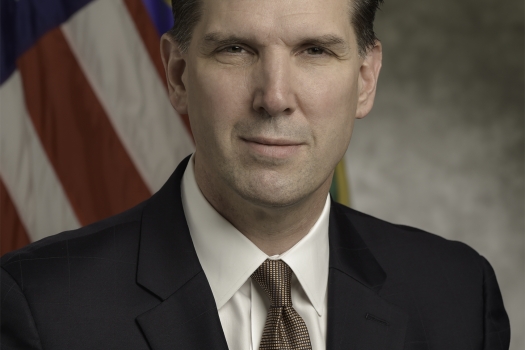Department of Energy
Nuclear Energy: Clean, Constant, and Cool
June 28, 2017
This week the
Administration is celebrating the contributions of America’s energy
sector to our economy and our security through a series of events dubbed
“Energy Week.” There’s a lot to be proud of — from a booming oil and
gas sector to a surging market for renewable energy, the United States
continues to be a dominant player on the world’s energy stage.
Here in the Energy Department’s Office of Nuclear Energy (NE), we’re particularly proud of the contributions being made by the nation’s nuclear power plants. Nuclear is, in short, a clean, constant, and downright cool energy resource. Unfortunately, many people may not understand how remarkable this unique energy source truly is, or the role that it plays in our energy portfolio and Americans’ daily lives.
So, in honor of Energy Week, here are some key facts about nuclear energy and how it makes our world a better place:
Here in the Energy Department’s Office of Nuclear Energy (NE), we’re particularly proud of the contributions being made by the nation’s nuclear power plants. Nuclear is, in short, a clean, constant, and downright cool energy resource. Unfortunately, many people may not understand how remarkable this unique energy source truly is, or the role that it plays in our energy portfolio and Americans’ daily lives.
So, in honor of Energy Week, here are some key facts about nuclear energy and how it makes our world a better place:
-
Nuclear energy is truly “American made.” The United States pioneered the peaceful use of atomic energy in the years after World War II, and was the first nation on earth to harness electricity from a nuclear reactor.
-
Today, nuclear energy generates roughly 20 percent of America’s electricity while emitting zero greenhouse gases, making it by far the largest source of clean energy in the country.
-
Nuclear plants can operate around the clock, seven days a week, for 18 months or more at a time without stopping to refuel. It’s the most constant, reliable energy resource we have in our portfolio.
-
Nationally, the nuclear industry supports an estimated 475,000 direct and indirect jobs, and adds approximately $60 billion to the U.S. Gross Domestic Product (GDP).
-
Internationally, the United States has set the gold standard for the safe, peaceful use of nuclear technology, with the world’s strongest safety measures and oversight. While other nations like Russia and China have developed nuclear industries of their own, the world has benefitted greatly from American leadership.
-
Beyond our planet, nuclear technology powers deep-space exploration. The Mars Rover, the Cassini Saturn orbiter, and the New Horizons craft that flew past Pluto all use Plutonium-238 to generate the electricity needed for their missions. Pretty cool, right?
So, what does the
future look like for nuclear? We believe it is bright, and we’re
working to keep it that way. In NE, we are working with industry and
other stakeholders to extend the lifecycles of our current fleet of
reactors, and we’re also working to support the next generation of
advanced nuclear reactors. We have supported the development of
state-of-the-art and exciting new small modular reactors
(SMRs), which could prove to be cheaper, more flexible alternatives to
the larger-scale reactors we have today. We are also supporting the
development of accident-tolerant light water reactor fuel and advanced proliferation-resistant fuels for sustainable fuel cycles. And we are supporting the next generation of nuclear engineers by providing undergraduate scholarships and graduate fellowships to students.
As we celebrate the Administration’s “Energy Week,” we will keep working to achieve NE’s core mission of advancing nuclear power as a resource capable of meeting the nation's energy, environmental, and national security needs. With the demand for electricity on the rise both domestically and around the world, American leadership on nuclear energy is more important than ever.
As we celebrate the Administration’s “Energy Week,” we will keep working to achieve NE’s core mission of advancing nuclear power as a resource capable of meeting the nation's energy, environmental, and national security needs. With the demand for electricity on the rise both domestically and around the world, American leadership on nuclear energy is more important than ever.
Edward McGinnis
Edward McGinnis
serves as the Acting Assistant Secretary and the Principal Deputy
Assistant Secretary for the Office of Nuclear Energy.


No comments:
Post a Comment